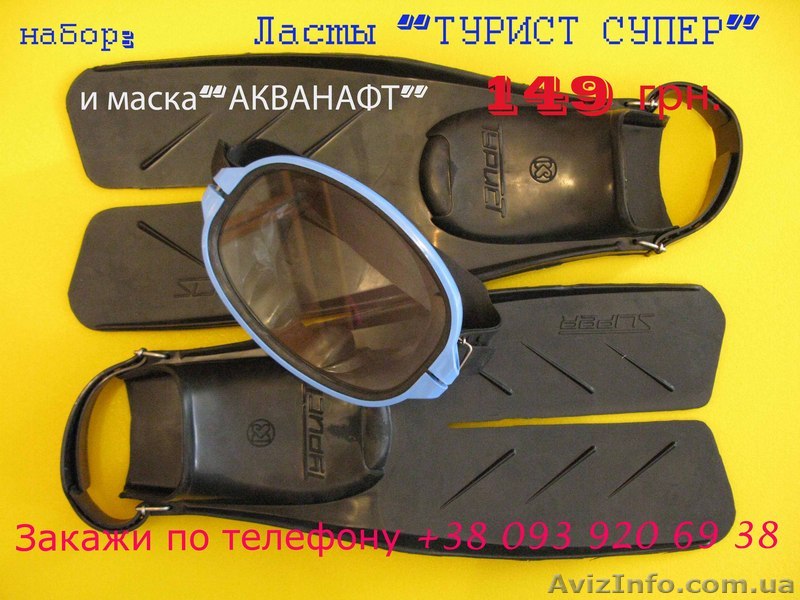We've already met the "Turist Super" in the image depicting Kievguma's range of fins:
Didi you spot it in the rightmost cell on the fourth row?
It's also pictured below:
It's fin No. 6 in the collection. Here's are a couple of close-ups:
As you can now see, the Turist Super is the open-heel equivalent of the Akvanavt Super below:
Like the Akvanavt Super, the Turist Supper is a fin with a split blade. One of the retail outlets at
Ласты резиновые Турист Super has posted a description that roughly translates as follows:
Turist Super rubber fins. The fins have an open classical form, familiar to everyone from Soviet times. The foot pocket is designed to accommodate three adjacent shoe sizes. The fins are made of a rubber compound authorised for use by the health authorities. The fins are resistant to sea water and absolutely safe for human health. The colour of the goods may differ from the one pictured on the photo!
Another retail outlet has the fins priced at 149 Ukrainian Hryvnia, which converts to about US$ 5.53. Not bad considering how much fins, split or otherwise, cost here in the West!
This message will probably be the last in my round-up of fins ancient and modern manufactured within the territory of the Russian Federation and the republic of Ukraine. I haven't counted up how many models I've attempted to showcase over the months, but I hope I've convinced everybody that it's a big and varied collection. Hoping that I still have a few readers of these Russian and Ukrainian fin threads, I am minded to begin another series of threads dedicated to Russian and Ukrainian masks and snorkels from the Soviet era to the present day. Watch this space!





